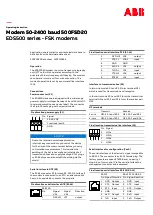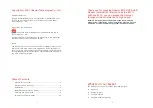
THEORY OF OPERATION: Frequency Generator (RF) Section
18
Figure 10. LV Frac-N Synthesizer
The LV Frac-N synthesizer is programmed using the serial peripheral interface
(SPI) bus of REDCAP RCE. The LV Frac-N is programmed using a fixed, 119-bit
programming sequence.
Crystal-Based Reference Oscillator
The LV Frac-N synthesizer FREF output provides a stable and accurate 16.8 MHz
reference frequency for the other synthesizers. The crystal-based reference oscil-
lator temperature compensation and frequency error correction is provided by the
LV Frac-N synthesizer. This 16.8 MHz signal is sent to all the ICs (iZIF, ADDAG,
DSP, ODCT) as a reference.
16.8MHz
Reference
Oscillator
Y300, D300
SPI
Bus
VCP
vmult1
vmult2
1.05MHz
Regulated
VCP Supply
CR301/CR302/
Q301
LV Frac-N
U301
Phase Detect
Loop
Divider
Prescaler
FREF_Out
16.8MHz
SF-FGU
Aux3
pre
956.9 to
979.65MHz
Tx
Injection
Loop
Filter
Q302
VCO
Q304, D301,
L304
956.9 to
979.65MHz
960.65 to
975.65MHz
956.9 to
971.9MHz
Discrete
Buffer
Q305
Rx
Injection
















































